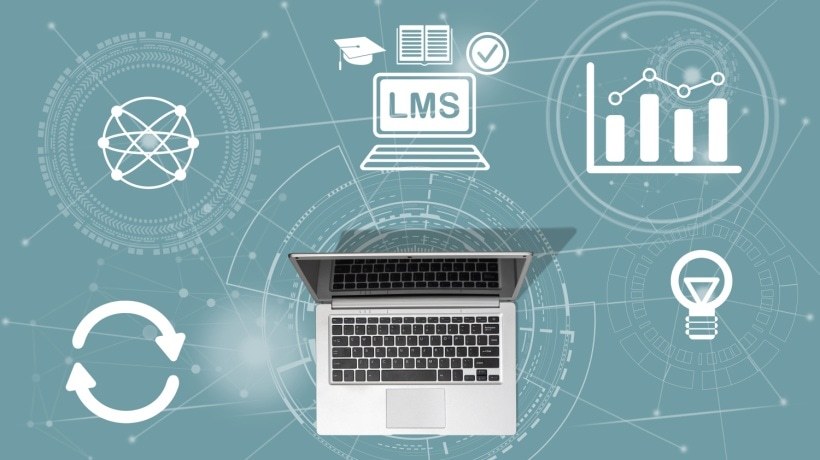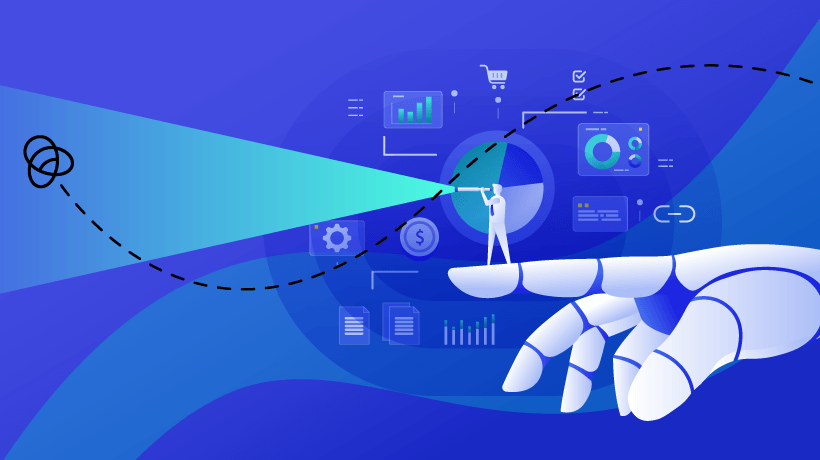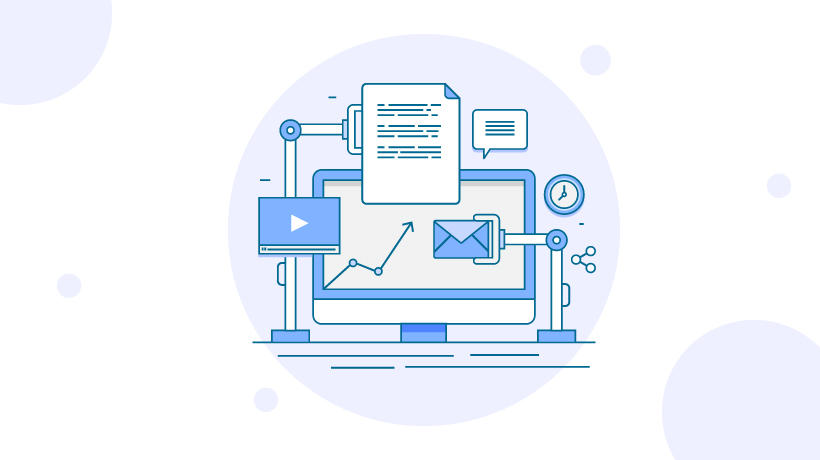Choose The Right Automation Approach For Your LMS
If you run learning programs at any scale, you've felt it: the friction of repetitive tasks that never end. New hires need onboarding. Compliance courses need reminders. Certificates need issuing. Managers want weekly rollups. None of these jobs are hard; just endless. That's exactly where the right automation approach earns its keep.
The challenge isn't whether to automate; it's how. Do you lean on your LMS's built-in rules? Do you use a no-code tool? Do you commission custom scripts? Or do you establish a lightweight workflow platform your team can grow into?
This guide helps you choose the right approach for your LMS ecosystem. We'll map common workflows, compare the main options, and walk through the criteria that matter in the real world—security, reliability, cost, and day-to-day maintainability. The goal is simple: pick something your team can live with long after the excitement of the first pilot fades.
Start With The Workflows, Not The Tools
Before shopping for solutions, write down the work you want to remove from human hands. A quick exercise:
- Onboarding
Create user → enroll in core courses → send welcome email → notify manager. - Compliance
Assign course by role → remind at 14/7/1 days → escalate to manager post-deadline → log completions. - Certifications
Detect completion → generate PDF → email certificate → update LMS record → create renewal reminder. - Cohort delivery
Registration → calendar invites → timed pre-work/post-work → attendance capture → follow-up survey. - Analytics and reporting
Weekly digest to managers (who's overdue, who's done) → monthly dashboard to leadership. - Content ops
New module published → accessibility checks → translations → reviewer tasks → go-live notifications.
For each workflow, note:
- Trigger
What starts it. - Systems touched
LMS, HRIS, email, calendars, LRS, helpdesk. - Frequency
On event vs. scheduled. - Volume
How many learners/records. - Risk
What happens if it fails.
You'll use this map to judge which automation route fits best.
The Main Automation Approaches (And When They Shine)
1) Use Your LMS's Built-In Automations
Most modern platforms include rules, triggers, or "automations." They excel at tasks inside the LMS: auto-enrollments by role, due-date reminders, certificate issuance, and simple branching based on completion.
- Good for
Fast wins, no new budget, minimal complexity. - Limits
Tough once you need data or actions outside the LMS (HRIS syncs, CRM updates, advanced analytics). Logic can feel constrained, and versioning/observability are often basic. - Choose this when
80% of your need is internal to the LMS and you can live with the vendor's limits.
2) No-Code iPaaS Connectors (Zapier/Make/etc.)
These LMS tools connect popular apps through templates and simple logic. They're friendly, quick, and cost-effective for low to moderate volumes.
- Good for
Connecting LMS webhooks to Slack, email, spreadsheets; simple ETL; scheduled tasks. - Limits
Throttling and pricing can bite at scale; complex error handling and governance are harder; API coverage varies by LMS vendor. - Choose this when
You want speed and approachability for non-engineers and your processes are straightforward.
3) Lightweight Workflow Platforms (Open-Source Or Self-Hosted)
Think of this as a middle lane between no-code and full custom development. You get visual workflows, strong node libraries, and the option to self-host for better control, with more sophisticated branching, retries, and observability than many iPaaS tools.
- Good for
Multisystem flows, event-driven designs, and teams that need flexibility without going "full dev shop." - Limits
You'll still need someone comfortable with APIs, credentials, and deployment basics; hosting and upgrades are your responsibility. - Choose this when
You need control, scale, and extensibility, and you're willing to own a modest tech footprint.
This is also where mentioning "n8n workflow development" naturally fits in a broader content strategy—once.
4) Custom Scripts And Serverless Functions
Tiny, focused code pieces (e.g., AWS Lambda, Cloud Functions) that do one job well: transform data, call APIs, and move on.
- Good for
Bespoke needs, high performance, and full control over logic. - Limits
You own everything—logging, retries, secrets, versioning. Small scripts have a way of multiplying into a system you didn't plan to run. - Choose this when
Your use case is unique, time-sensitive, or performance-critical—and you have engineering support.
5) Enterprise Integration Platforms (ESB/iPaaS At Scale)
These are the heavy-hitters IT loves: enterprise-grade governance, role-based access, change control, monitoring, and SLAs.
- Good for
Regulated environments, multi-region setups, and where integrations must pass strict audits. - Limits
Cost, lead times, and reliance on central IT; the learning curve can slow L&D teams that need speed. - Choose this when
Compliance, auditability, and uptime are nonnegotiable—and your organization already runs such a platform.
The Criteria That Matter (Beyond A Slick Demo)
Security And Privacy
- Where do credentials live?
Central, encrypted storage with rotation is a must. - Data in transit/at rest
TLS always; logs must avoid PII. - Access controls
Who can create, change, and run automations? Can you separate dev/stage/prod? - Compliance
Do you need SOC 2, ISO 27001, HIPAA, or data residency controls?
Reliability And Error Handling
- Retries and backoff
Transient API errors are normal; your tool should handle them. - Idempotency
Rerunning a workflow shouldn't double-enroll a learner or send duplicate emails. - Dead-letter queues and alerts
Failures should notify the right owner with enough context to fix fast. - Rate limits
Your design should respect vendor thresholds and queue gracefully.
Observability
- Run history and logs
Can you see every step, payload, and outcome? - Metrics
Success rates, average run time, queue depth, top failing steps. - Tracing
Follow a single learner's journey across systems for troubleshooting.
Flexibility And Maintainability
- Branching and reusability
Can you build sub-flows/modules rather than giant spaghetti flows? - Versioning
Can you test new versions safely and roll back? - Extensibility
Can you add nodes or call any API when the template doesn't exist?
Cost And Total Effort
- Licensing
User-based, task-based, or compute-based—and how will that grow? - Hidden costs
Time spent on upgrades, incident response, documentation, and handovers. - Opportunity cost
The hours you free up from administrators are real savings; measure them.
Vendor Lock-In And Exit Plan
- Portability
Is your workflow exportable (JSON/YAML)? - Standards
Webhooks, REST, and CSVs are your friends; proprietary glue makes exits painful. - Documentation
Write with the next person in mind—future-you will thank present-you.
Event-Driven Vs. Scheduled: Pick The Right Rhythm
Event-driven flows
Event-driven flows react in real time: a user registers, a course is completed, a survey is submitted. This feels snappy and reduces unnecessary polling, but requires reliable webhooks and secure exposure of endpoints.
Scheduled flows
Scheduled flows run on a calendar (e.g., every night at 1 a.m.): they're simpler to operate and excellent for rollups and audits, but they're not instant and can waste cycles checking "nothing changed."
In practice, most LMS ecosystems use both: events for learner-facing moments (welcome emails, certificates) and schedules for reporting and compliance checks.
A Simple Decision Framework
- Keep it inside the LMS
If your needs don't cross system boundaries and the built-in automations cover 80% of what you want. - Use a no-code connector
If your team is nontechnical, your volumes are modest, and your logic is simple. - Adopt a workflow platform
If you need multisystem flows, stronger error handling, and room to grow—without building everything from scratch. - Write custom code
If your requirements are unique or performance-sensitive, and you have engineering to own it. - Standardize on an enterprise platform
If governance, audit trails, and SLAs outrank speed and cost.
If you're unsure, pilot with the least complex option that can credibly succeed. You can always graduate to a sturdier approach once you've proven value.
What To Automate First (Low Risk, High Value)
- Overdue reminder series
Polite nudges at set intervals; escalate to managers last. - Certificate issuance
Generate PDFs on completion and attach to the LMS record. - Manager weekly digest
One email summarizing who's done, who's close, and who's overdue. - New-hire onboarding
Enroll core courses, send welcome, tag by department. - Post-course survey + follow-up
Collect responses, flag negatives, share wins.
These are visible, measurable, and forgiving. They build confidence and free up real hours quickly.
Architecture Patterns That Prevent Headaches
- Separate environments
A sandbox for experiments, production for the real thing. - Secrets management
Never hardcode API keys; rotate on a schedule. - Idempotent design
Include unique IDs and "already processed" checks. - Backpressure handling
Queue bursts, respect rate limits, and degrade gracefully. - Schema contracts
Agree on payload shapes between systems; version your contracts. - Observation by default
Add correlation IDs to logs so you can trace a learner across steps.
Governance That Doesn't Slow You Down
- Ownership
Every workflow has a named owner and a clear backup. - Reviews
Peer review flows that touch enrollment, compliance, or PII. - Runbooks
Short "if this fails, do this" documents tied to alerts. - Change windows
Deploy heavy changes during low-risk hours. - Documentation
One page per workflow: purpose, trigger, inputs/outputs, errors, test plan.
This light structure keeps you safe without smothering momentum.
Measuring Success (So You Can Defend Your Budget)
Pick a handful of metrics and stick with them:
- Hours saved per month
Admin work avoided. - Learner impact
On-time completion rates, fewer duplicate emails, fewer support tickets. - Reliability
Success rate, mean time to resolve. - Cycle time
How quickly new cohorts are launched. - Cost to serve
What each completed workflow run costs you.
Bake measurement into the design—log events in a sheet or database from day one.
Common Pitfalls (And How To Dodge Them)
- Trying to automate everything at once
Start with one or two high-value flows, prove the model, then expand. - Ignoring the edge cases
"User already enrolled," "no manager found," "email bounced"—handle them gracefully. - Forgetting learners are humans
Reminders should be respectful, timed well, and easy to snooze. - No plan for ownership
When people change roles, workflows get orphaned. Assign backups and keep docs current. - Treating automation like a one-off project
It's a product. It needs updates, monitoring, and care.
Three Quick Example Patterns
Compliance Without The Chaos
- Trigger
Assignment by role. - Flow
Schedule reminders → escalate politely to managers → post-deadline summary to HR. - Success
Fewer last-minute scrambles, higher on-time rates.
Cohort Program On Rails
- Trigger
Registration form. - Flow
Calendar invites → pre-work links → attendance capture → automated post-work and survey. - Success
Consistent learner experience and less admin juggling.
Manager Visibility In A Single Email
- Trigger
Weekly schedule. - Flow
Pull completions, overdue counts, and risk flags per team; send one clean email. - Success
Managers act sooner, learners get support faster.
Bringing It All Together
Choosing the right automation approach for your LMS isn't about chasing the shiniest tool. It's about matching your workflows, people, and constraints to a solution you can own comfortably. If you're mostly operating inside one platform, stick with the built-in automations and keep life simple. If your learning stack spans HRIS, calendars, LRS, and helpdesk, consider a workflow platform or a small dose of custom code where it matters most. If you live in a regulated environment and need strict controls, coordinate with IT and lean on the enterprise integration tools they support.
Most of all, think in iterations. Ship a small win, measure it, share the results, and reinvest. In a few cycles, you'll have a calmer, more reliable learning operation—and a team that spends time on design and coaching instead of playing calendar tag with reminders and spreadsheets. And yes, if you decide to expand your capabilities later, you can always explore n8n workflow development—but start with the approach that gets real value into learners' hands this quarter.








